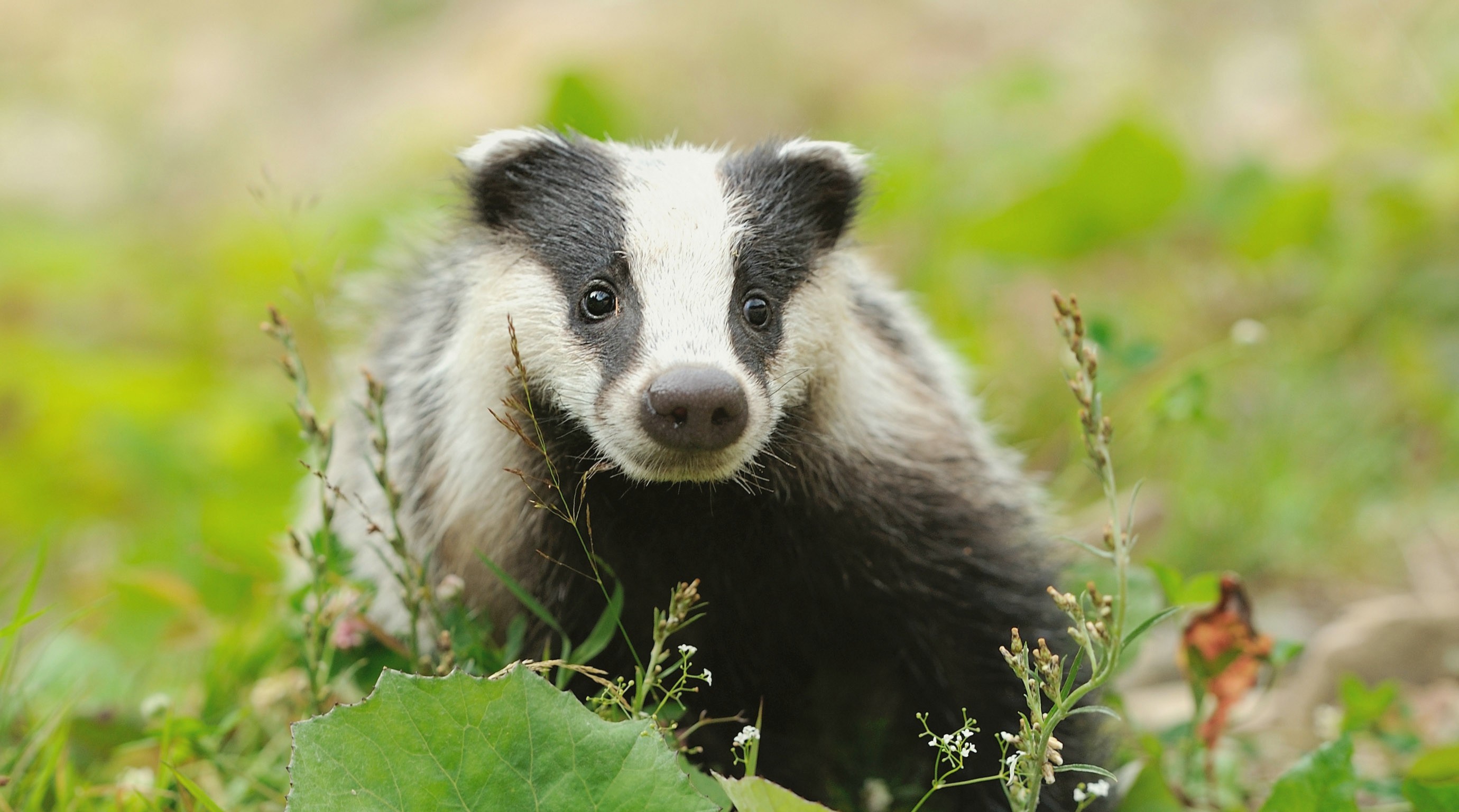2/16/2024
by Active Wild Admin
activewild.com
Meet The Honey Badger: Introduction
The honey badger (also known as a ratel) is a mammal in the weasel family. It is found in Africa, the Middle East, & India.
One of the largest species of the weasel family Mustelidae, the honey badger has a reputation for toughness. Its thick skin, powerful claws, & teeth allow it to defend itself against animals much larger than itself.
How To Recognize A Honey Badger
The honey badger has a squat, powerfully-built body, relatively short legs, & a short, bushy tail. Its eyes are small & dark & its ears barely protrude from the head.
The honey badger's thick fur is black on the face, sides & undersides, & pale grey / white on the top of the head, neck & back. Its tough, loose-fitting skin is a defensive adaptation; even if the honey badger finds itself clamped in a larger animal’s jaws, thanks to its loose skin it is able to turn round to bite the would-be predator.
Each of the honey badger's feet has 5 strong, curved claws, with the claws of the forepaws being longer than those of the hindpaws. Its teeth are short & sharp.
Honey Badger Facts: Size
The honey badger is the largest mustelid (member of the weasel family, Mustelidae) found in Africa, & one of the largest overall, being smaller than a wolverine (the largest Musteild), & only slightly smaller than the greater hog badger & European badger.
On average, honey badgers are around 55 to 77 centimeters (22 to 30 inches) in length, with the tail adding another 17 to 30 centimeters (7 to 12 inches). Honey badgers weigh between 5 & 16 kilograms (11 & 35 pounds), with males weighing more than females.
Honey badgers are around the same weight as the jackal species with which they share part of their range.
Where IS The Honey Badger Found?
Despite being found across a wide area, which includes most of Africa, much of the Middle East & part of Asia, the honey badger’s population density is very low.
In Africa, the honey badger is mostly found south of the Sahara desert. The honey badger is also found in several Middle Eastern countries (including Saudi Arabia, Yemen, & Iran), in western Asia & in India.
Habitat
The honey badger is extremely adaptable, & is able to live in a wide range of habitats, including rainforests, savannas, grasslands, & deserts.
Behavior
Adult honey badgers usually live alone, only pairing up during the breeding season. They are primarily nocturnal, but can be active at any time of the day, especially in areas uninhabited by humans.
The honey badger usually digs its own burrow, but will also use the abandoned burrows of other animals, including those of the aardvark & various fox species.
The honey badger’s burrow is relatively simple, consisting of just a tunnel & a resting chamber. It rarely exceeds 3 m (10 ft.) in length & 1.5 m (5 ft.) in depth. The honey badger will fiercely defend its burrow from larger animals who wander too close.
The honey badger is not strongly territorial. A male honey badger has a large home range, which can cover up to 500 km2 (193 square miles). This will take in the home ranges of several females, & will also overlap with the home ranges of other males. Honey badgers leave scent markings to communicate with each other.
Honey badgers produce a range of sounds, including grunts, growls, & whines. When they meet they will sniff each other & roll around, leaving scent marks on the ground.
The honey badger is a highly intelligent animal & there is some evidence of it using objects as tools. Captive animals have been observed piling objects on top of each other in order to escape from an enclosure. Another individual was seen to move a log in order to be able to reach some food.
Diet
The honey badger is an omnivore (it eats both meat & plants), although meat forms the bulk of its diet. Although it hunts most of its own prey, it will scavenge food, & also steal food from other predators.
The honey badger is an opportunistic generalist hunter (i.e. it will eat pretty much whatever it can get its paws on), & does not have a specialized diet. It eats a wide range of animals. Any animal smaller than the honey badger is potential prey, as are mid-sized species & the young of large species such as antelopes.
Small mammals make up the majority of the honey badger’s diet, but it will also eat reptiles (including snakes) & birds.
The honey badger seeks out both honey & bee larvae from wild bee nests & beehives – a behavior that gave the honey badger its name.
Predators
The honey badger is not an easy meal, & has few natural predators. However, despite its tough reputation, the honey badger is not at the top of the food chain.
Large predators such as the lion, leopard & African rock python will prey on the honey badger, although usually only as a last resort if no other food is available. Black-backed jackals have been known to prey on honey badger cubs.
Honey Badger Family & Related Animals
The honey badger is a mammal, & a member of the order Carnivora. If belongs to the family Mustelidae (the weasel family), & is the only animal of genus Mellivora.
Other mustelids (members of the family Mustelidae) include weasels, badgers, otters, martens, & the wolverine.
Despite its name, the honey badger isn’t closely related to other badger species. Its closest living relatives are the martens.
Honey Badger Subspecies
Currently, 12 honey badger subspecies are recognized. These include the Cape ratel, Indian ratel, and black ratel (which is all black in color).
The various subspecies are found in different locations, & are distinguished by differences in size & coat markings.
Honey Badger Life Cycle
Male & female honey badgers only come together for a short time to mate, after which time the male resumes its usual solitary lifestyle. The female digs a burrow & gives birth to a single cub (very occasionally to twins) after a gestation period of 50 to 70 days.
A newborn honey badger cub is blind & hairless, & completely reliant on its mother. Even after reaching adult size at 6 months old, the cub will remain with its mother for at least another 8 months as it learns how to fend for itself.
Is The Honey Badger Endangered?
Despite being a rare animal, the honey badger is found across a wide area & currently is not endangered. The species is rated "Least Concern" by the IUCN. However, the honey badger population is thought to be decreasing.
Honey badgers are hunted by local people for food & for use in traditional medicines. They are also killed by local beekeepers who believe that the species is a threat to their livelihood.
Cute Critter Pics:
Weekly Chuckle:











No comments:
Post a Comment